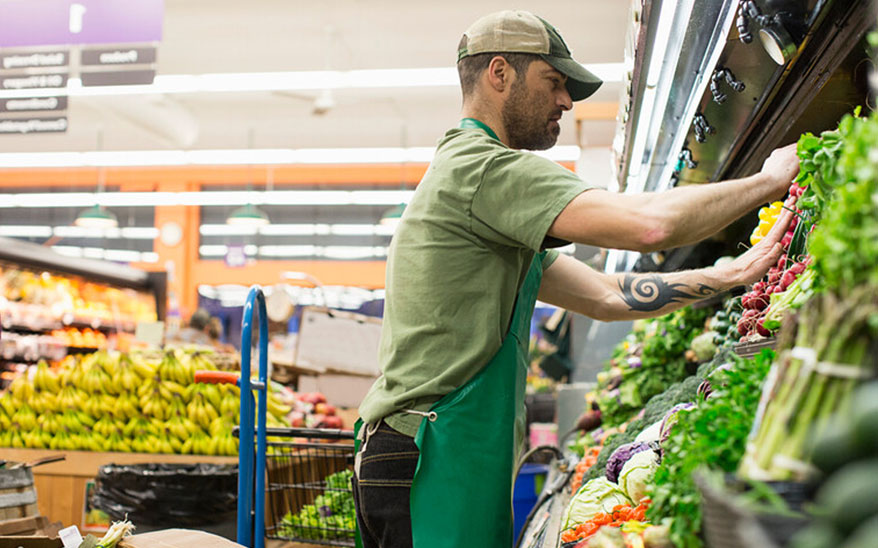Pandemic Shifts Shine A Light On Importance Of Modern Point Of Sale
- December 1, 2021
- By Manhattan Staff

Did you know that point of sale systems date back to 1879 when the first one was invented by American shopkeeper James Ritty?
POS systems have come a long way since and have recently taken a dramatic shift in their capabilities. These recent advancements include front-end and back-end responsibilities merging with ease, cloud-based efforts supporting both in-store and online purchases, and mobile becoming increasingly popular to manage POS on any device or app.
But this only touches the surface of modern POS capabilities and all that it offers today’s retailers, both large and small. Factor in the global pandemic and POS systems are now challenged to become as sophisticated as they’ve ever been to keep up with both consumer expectations having to quickly adjust to sourcing challenges, contactless experiences, heightened shipping demands and more.
Keeping this in mind, what are some of the advantages retailers have when leveraging POS to support their businesses? Particularly since the pandemic.
Pandemic challenges resolved
Joe Kamara, a Sales Executive with Manhattan Associates for over 14 years, believes that “if you don’t have a modern POS and customer order management capabilities, your ability to be resilient can be impacted significantly.”
This resilience was challenged firsthand by retailer Kendra Scott when its distribution center was forced to close at the beginning of the pandemic despite inventory demands that continued via online orders. Within seven days of recognizing the challenges presented by COVID and unexpected closures, Kendra Scott was able to leverage the resilience in its cloud-native customer order management capabilities to fulfill online orders from stores fueled by Manhattan Associates’ Order Management System. These adjustments were made seamlessly and led to continued selling opportunities despite a global pandemic.
With stores taking control of their inventory management, selling channels, distribution experiences, and shipping, they also recognized that customers wanted to be in control. This, as Kamara explains, is a key component to how the pandemic has changed retail and he describes it as “self-service commerce.”
“From self-service checkouts at stores to curbside pickup, to contact-less payments, retailers had to find ways to let customers start (and finish) their shopping journeys however they wanted. Using mobile, for example, became increasingly popular. And the interest in virtual shopping mediums to showcase merchandise and ‘order on behalf of customer’ with secure pay-by-link are on the rise during COVID, as well,” explains Kamara.
Digital self-service, post-purchase experiences that provide customers the ability to receive order notifications, track shipments, manage their orders and payments, and manage pickup and shipment preferences via any personal device are also becoming standard in retail’s new normal.
What was initially presented as post-pandemic challenges to many merchants are now conversely viewed as opportunities, which is exciting as we continue to look ahead at the evolution of POS.
Unified commerce platforms
POS and customer order management technologies have transformed how customers have shopped and likewise, how retailers can support them. Being able to have choices and pivot directions during the buyer’s journey is now vital for customers and retailers alike. As we continue to move ahead in our pandemic-centric economy, it’s critical to incorporate modern POS technologies to help keep the momentum of business thriving.
Operating unified systems, as Kamara explains, can achieve this. But this unity doesn’t come with just connecting every touchpoint in which a customer can shop; it also includes incorporating a 360-degree view of existing customer habits, wishlists and historic purchases. Additionally, being able to integrate into external technologies is also important. From payment providers such as Klarna and Apple Pay to integrating with shipment companies such as ShipStation or Shippo, the key is to be (you guessed it), unified.
This unity is what ultimately keeps customers and brands connected at every twist and turn they may take in their purchasing journey. Along the way, unexpected detours can be avoided by having integrated partners from external technologies, payments, and platforms that easily merge into a unified POS and customer order management experience. It’s through these combined efforts that keep customers connected to brands, delivering to them both the customer satisfaction and convenience that they’ve come to expect, ensuring a memorable experience and creating customer loyalty.
As the evolution of POS continues during a pandemic affected economy, one thing has become clear. Customers are in the driver’s seat regarding how they want to shop.
However, it’s up to retailers to steer the ship, and they can only do so by having sophisticated, modern POS and customer order management systems in place that support customers no matter where their shopping journey may take them.
Whether in-store, online, curbside, via mobile, or even shopping via social media, ask yourself: is your store connected to deliver a unified experience through your POS in all the places your brand is represented? If not, you need to continue on your own evolution of POS and maybe Joe and the Manhattan Associates team could be the people to help do just that. Let’s talk.





